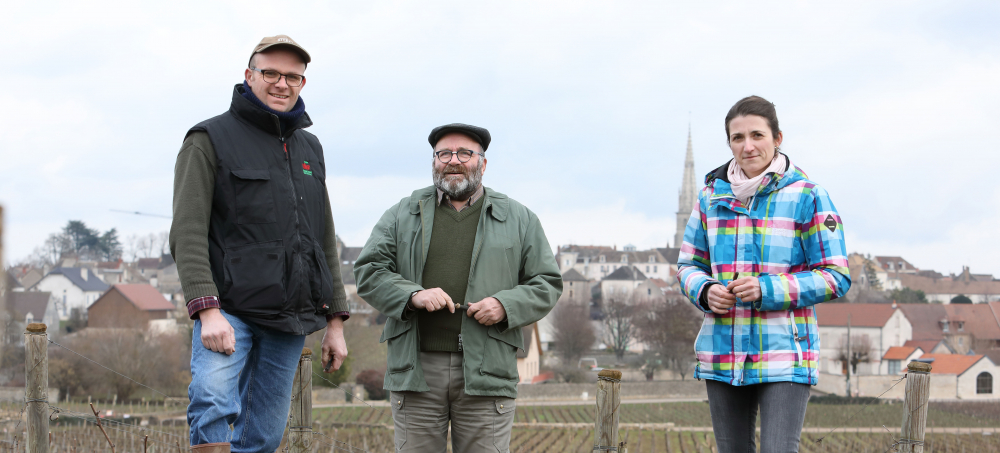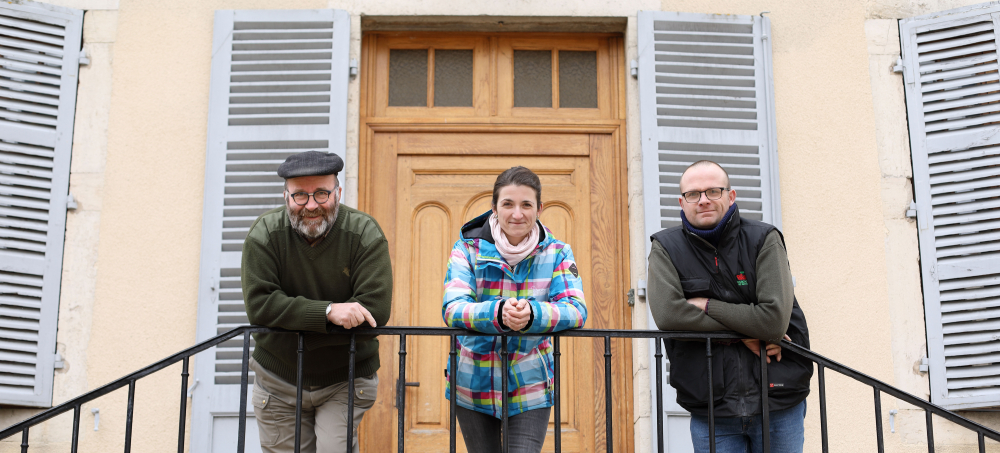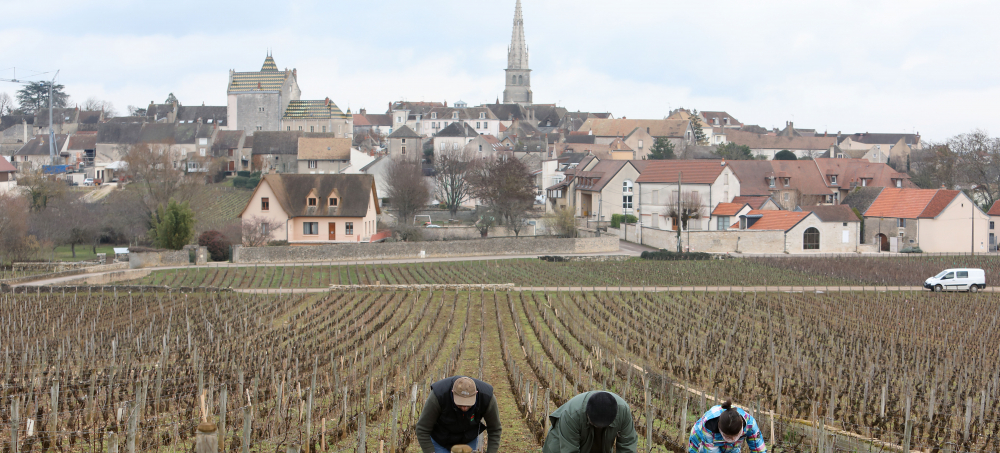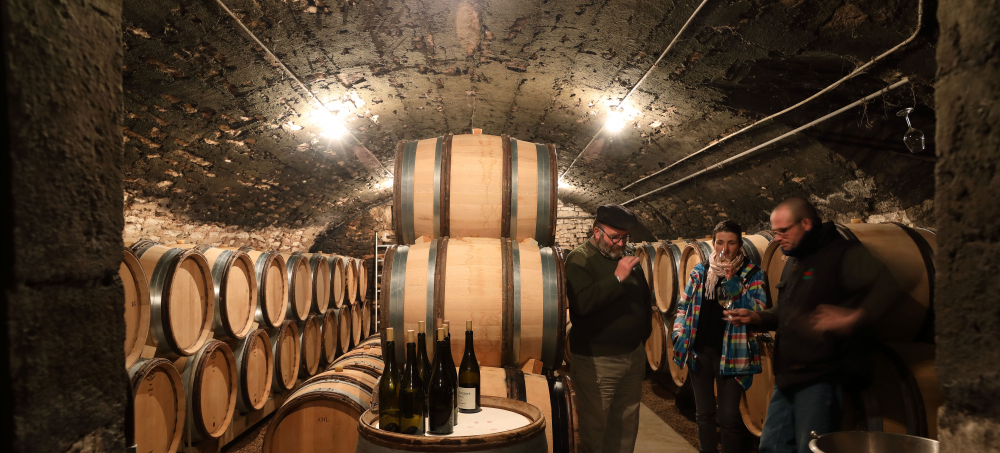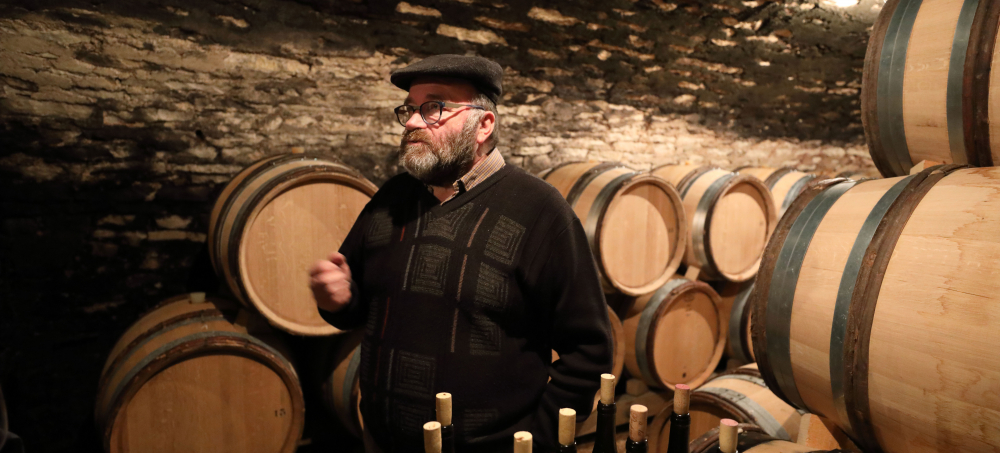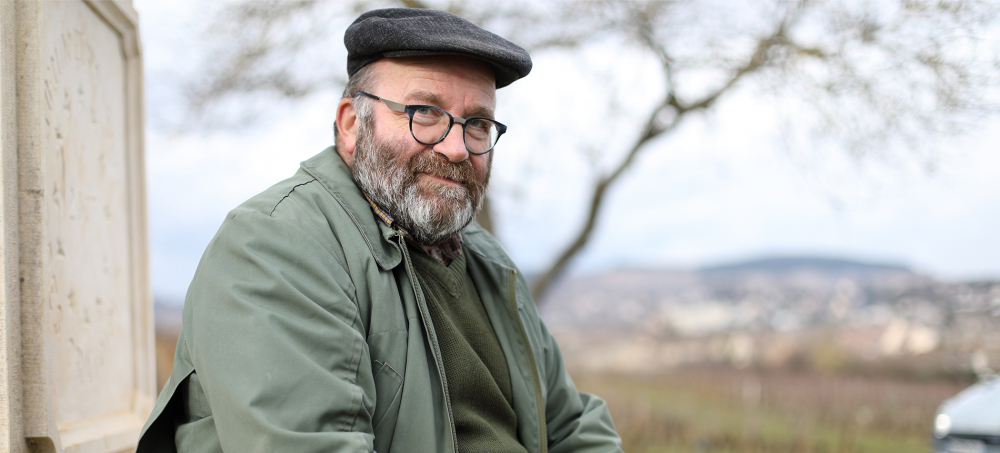The family holdings of what was long referred to as Domaine Boisson-Vadot are now collaboratively produced and bottled under the Pierre Boisson and Anne Boisson labels at the family's cellars in Meursault. Boisson is one of the fine, outstanding small producers in the village of Meursault that is not particularly well known beyond its native France, but has developed an almost cult-like following among Burgundy fans in this country. The Boisson family have been vignerons in Meursault for more than two centuries and the wines today are as fine as they have ever been in the long and illustrious family history. While father Bernard is a constant presence, Pierre and Anne are "at the helm," so to speak, making decisions together and turning out between three and four thousand cases of wine per year. Pierre Boisson is also an old, school-age friend with Raphael Coche, son of Jean-François Coche of Domaine Coche-Dury, and the two often discuss winemaking and viticultural philosophies.
The Boisson wines have always been excellent, with a classic, soil-driven and racy style not encumbered by excessive new oak or battonage. Like so many of the top domaines in Burgundy, there are no secrets to their success. Rather, the tried and true formula of a high percentage of old vines, careful vineyard work to nurture the greatest potential of each vintage, and patient winemaking in the cellars allows the unique, underlying terroirs of each vineyard to take the spotlight in the finished wines. The wines are aged in a very modest amount of new oak - no more than twenty-five to thirty percent for the top cuvées - and less for the village wines and the Bourgogne bottlings. The wines are all fermented with indigenous yeasts and go to barrel with little or no settling of the lees, after which they receive a relatively long élévage of 19-22 months, which the Boissons feel gives the wines additional depth and refinement. Before bottling, wines receive a light fining but no filtration.
While their top Meursault bottlings are certainly the calling card of the domaine, the Boissons are also big believers in under-valued and less heralded terroirs that offer an opportunity for making very interesting, character-laden wines at very fair prices. The key of course is to apply the family's careful and meticulous viticulture and winemaking to these often under-achieving appellations. Today, these holdings include vineyards in the Hautes Cotes de Beaune, the Cote Chalonaise (Rully) and the Maconais.
In the Cote de Beaune itself, the hierarchy starts with an excellent duo of Bourgogne Blancs - one from Pierre and one from Anne - both from vines in the village of Meursault. With their broad texture and hints of lime, nuts and honey, they could easily be mistaken for village Meursault. In the 2018 vintage, Pierre added two single vineyard Bourgogne Blancs to the offering: Les Herbeaux (from 1961 plantings) and Murgey de Limozin (from 1924 plantings), and in 2020, Les Belles Cotes. Historically these were blended into Pierre's Bourgogne Blanc, but he felt they merited isolation and distinction, and we are thankful he followed through. Additionally, Pierre makes a village Meursault from young vines replanted in the lieu-dit of Perchots, along with a village Meursalt Criots from 30-50-year-old vines inherited from his grandmother. It is a textbook example of the appellation, with the hazelnut-tinged fruit of the village coupled with lovely minerality and notes of lime zest. The domaine also makes three distinct village wine bottlings from three of the best lieux-dits in Meursault: Sous la Velle (planted in 1947, 1952, 1987, 1990 and bottled under Anne Boisson); Chevalières (planted in 1982 and bottled under Anne Boisson), and Grands Charrons (planted in 1988 and bottled under Pierre Boisson). The Grands Charrons bottling is the most exuberant of the three ("the most Meursault-y" says Bernard). The Sous la Velle is broad yet refined, perhaps a slightly toned down version of the Grand Charrons. Lastly, the Chevalières is racier and more mineral in profile, with a tighter fruit component in its youth. All the wines are excellent and quite age-worthy, and behave much more like top premier crus than they do village wines.
The family also makes a beautiful example of Meursault “Genevrières”, now bottled under the Anne Boisson label. Planted in 1975, Boisson's Genevrières vines produce a wine of both power and quiet restraint that is a step above the villages bottling. The Boisson lineup is rounded out with a bit of Bourgogne Rouge, Haute Cotes de Beaune Rouge, Auxey-Duresses and Pommard, as well as a tiny amount of Aligoté from a block of 65-year-old vines in the commune of Meursault. With many of the finest examples these appellations and terroirs have to offer, Boisson has firmly established itself in the pantheon of Meursault producers that have elevated this village to the status it enjoys today as one of the most dynamic villages in the Côte d'Or.
